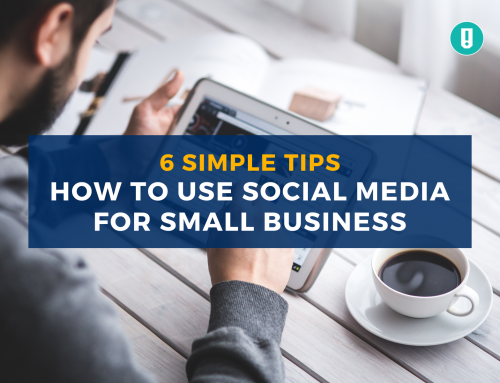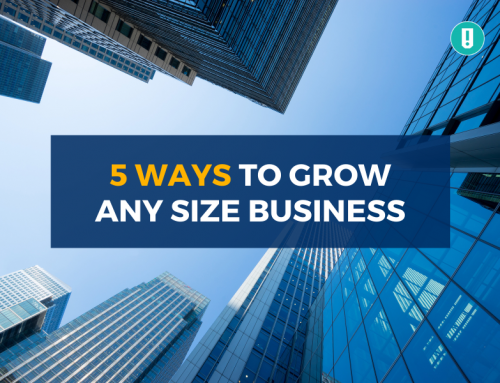Nowadays, we cannot underestimate the power of online shopping websites. With more people shopping from e-commerce stores to save energy and time, the interest of those who prefer to shop at physical stores has declined to some degree.
At the same time, we can’t overlook the large segment of our society that prefers to shop offline. To cover all areas of our community, it has become essential to take into account the benefits of utilizing online and offline stores to sell or purchase any product or service.
In line with this, the following are 5 e-commerce lessons that will help to provide a lift to your local business:
In-Store Product Interaction Maintains an Advantage
The one thing that online stores can’t replicate is the ability to feel, smell, touch, and generally get an interactive experience with a particular product. Online stores can compensate by providing extended return policies and lenient trial programs. However, each of these needs a greater commitment than store visits.
The Local Search Association (LSA) reported in one study that the ability to interact with products was the main reason for most consumers to shop in-store. The only group for which this was not true was Gen Z, 72% of whom stated their primary reason was to avoid shipping costs (bearing in mind that this group of people probably spends mostly on small item acquisitions).
With more research on products, in-store visits to interact with products are done on the last leg of the purchasing process. Therefore, these store visitors ought to be considered high-conversion leads. There are various ways of dealing with the concern about showrooming. You need to provide the consumer with reasons to purchase within a store by emphasizing on things like easier returns devoid of shipping costs, and price match policies.
Create Compelling Email Campaigns
When you use emails to reach your target audience, you establish a personal connection with them. Unfortunately, most business people do not deliver compelling emails regularly. As a result, they waste this vital marketing channel that has the potential to maximize conversions.
Increasing the opt-in rate for your mailing list is not the only means of increasing your email marketing campaign. In addition, you have to offer value in staying subscribed (bearing in mind that consumers already expressed a level of trust in subscribing to your mailing list). It will be imprudent to destroy that trust if you keep on filling their inbox with useless spam. With this in mind, ensure that you send relevant and valuable emails. You can begin by sending a professional ‘welcome email.’ However, you should continue to send quality emails each time there are product promotions or essential updates.
Furthermore, you can also send reminders whenever customers leave items in their wishlists for a long time.
Leverage Customer Reviews
No item will be sold online without trust. Trust is the main thing that drives every purchasing decision, particularly in e-commerce stores that do not have the cash on delivery option. Moreover, one of the best ways of establishing trust is to leverage user-generated content like customer reviews
When buying an item online, most consumers (92% of them) tend to trust word-of-mouth and recommendations from their friends or family more than promo materials from a company. The quickest means of capitalizing this is to encourage user reviews on social media platforms like Facebook (since most of your prospects’ friends are probably on Facebook, there’s a high possibility that publishing good reviews will guarantee the best visibility.
Moreover, you can display customer reviews from your category or product pages. This approach can boost sales tremendously, particularly if you show authentic and insightful reviews. For you to do this, you’ll require tools such as MyRealKarma to gather online reviews from various e-commerce sites such as eBay and Amazon.
Your Website is Also Your Storefront
At times, it can be difficult for brick-and-mortar stores to devote the same investment to their website as they do their store. On the other hand, e-commerce websites do not have this conflict. Based on statistics on consumer behavior, local businesses ought to recognize that they most probably have traffic to their site than the store, and most customers will go to their website first.
Research carried out in 2016 by Google and Purchased Digital Diary indicated that 58% of consumers visited a retailer’s app or site before making an in-store purchase. In addition, research done by Local Search Association’s of 8000 consumers found out that a company’s website is the most utilized channel for most consumers who are ready to buy an item or items. Moreover, 24% refers to a company website more than search engines (which stands at 24%).
Research carried out by Vistaprint in 2016, revealed that 45% of consumers are not likely to purchase from a business that has a website that’s not properly designed. This can be anything, from a poor mobile experience to broken links, a perplexing user experience, etc.
Therefore, business owners ought to realize that a website is an extension of your store, and they must invest in an excellent online experience for their customers.
Provide a Full Shopping Experience
Most people think that only giving fundamental information online will increase store traffic where customers get the ultimate experience (we’re not trying to underrate the value of in-person customer visits; however, nowadays consumers want more information online).
The research conducted by Local Search Association revealed that 63% of consumers research a service or product online 50% of the time before making a purchase. Most consumers research a product or service online more regularly. 46% stated that they do online research 75% of the time before making in-store purchases.
For instance, online mattress companies might appear as if they are a big disadvantage to local stores. However, they are competing efficiently by giving valuable information to compensate for the inability of customers to personally test the mattresses. Efficient utilization of videos individualized for every mattress highlighting features, descriptions, and comparison data comes close to imitating a conversation with a sales representative. Moreover, things like charts and reviews also assist in decision making.
Brick-and-mortar stores ought to match these online experiences even prior to realizing their in-store product advantage.
Conclusion
In a nutshell, in today’s market, it will be great if you think like an online store and utilize some e-commerce tactics to boost your local store’s business.
Are there any other e-commerce lessons for boosting local businesses that have been left out?
Author’s Bio: Charles is a career mentor, content writer for paperwriters.org, motivational speaker & human resources consultant with over 10 years of experience in HR sector. Apart from career mentoring, he loves photography and football. Find him on Linkedin, Twitter, Facebook & Google+.





Leave A Comment